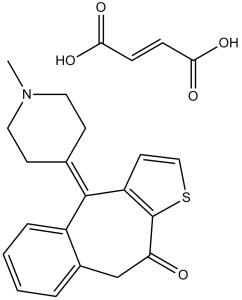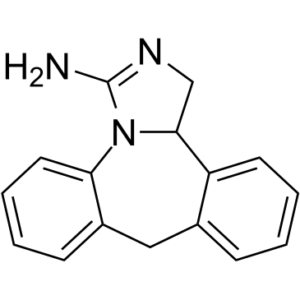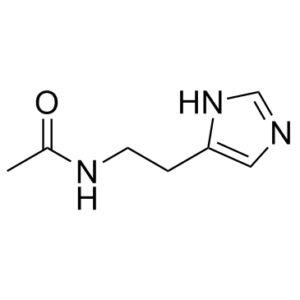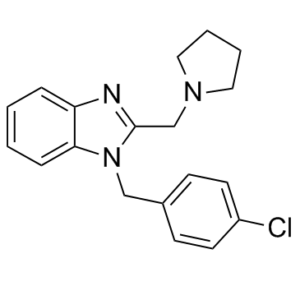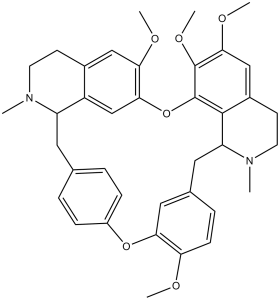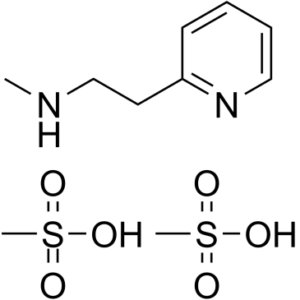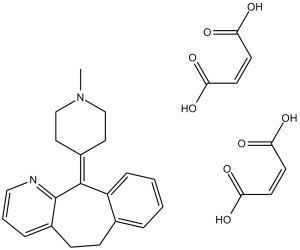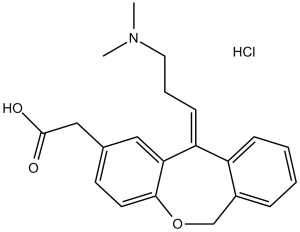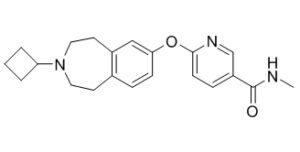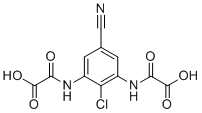Ketotifen Fumarate (HC20511; Ketotifene, Zaditor, Zaditen, Ketotiphen), the fumaric acid salt of ketotifen, is a second-generation and noncompetitive H1-antihistamine and mast cell stabilizer used to treat allergic symptoms and to prevent asthma attacks.
Epinastine (also known as WAL-801CL HCl) is a potent antihistamine H1 without sedative activity and a mast cell stabilizer that is used in eye drops for the treatment of allergic conjunctivitis.
N-Acetylhistamine is a novel and potent histamine metabolite used as a potential biomarker of histidine metabolism for anaphylactoid reactions.
Clemizole (also known as AL 20, P 48, and/or Reactrol), is a potent inhibitor of transient receptor potential channel TRPC5 (Canonical transient receptor potential channel 5) and also an H1 histamine receptor antagonist.
Tetrandrine (also called Fanchinine; Sinomenine A; d-tetrandrine; formerly NSC-77037), a bis-benzylisoquinoline alkaloid derived from Stephania tetrandra, is a novel and potent calcium channel blocker which inhibits voltage-gated Ca2+ current (ICa) and Ca2+-activated K+ current.
Betahistine mesylate (also known as PT-9), the mono-HCl salt of Betahistine, is a potent histamine H3 receptor inhibitor with IC50 of 1.9 μM.
Azatadine dimaleate (SCH10649; SCH-10649; Idulamine; Idulian; Lergocil; Optimine; Zadine), the dimaleate salt of azatadine, is a potent histamine and cholinergic inhibitor that has been approved for treating allergic rhinitis and chronic urticaria.
Olopatadine HCl (Pataday; Patanase; KW-4679; ALO-4943A; ALO4943A; KW4679), the hydrochloride salt of olopatadine, is a 2nd-generation, selective histamine H1 receptor (IC50 of 559 μM for the release of histamine) antagonist and also a mast cell stabilizer used to treat itching associated with allergic conjunctivitis (eye allergies), it may also be used for the treatment of […]
GSK189254A (also known as GSK189254) is a novel histamine H(3) receptor antagonist with high affinity for human (pK(i) = 9.59 -9.90) and rat (pK(i) = 8.51-9.17) H(3) receptors.
Lodoxamide (U-42585E; Alomide) is an antiallergic agent acting as a mast cell stabilizer, as well as a potent agonist of GPR35 with an EC50 of 1.61 nM in a β-arrestin-2 interaction assay using CHO-K1 cells expressing the human receptor.
